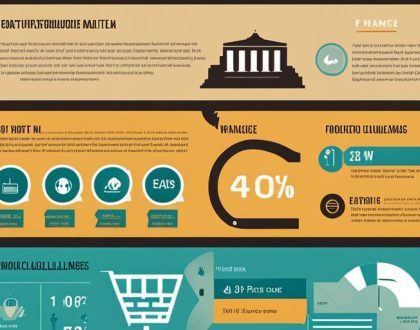Psychology Behind Payment Preferences

You may not realize it, but your payment preferences are deeply influenced by various psychological factors. Understanding why we choose one payment method over another can provide valuable insights into consumer behavior. From the emotional responses associated with different forms of payment to the perceived security of certain methods, there is a complex interplay of motivations behind how we choose to pay for goods and services.
Historical Evolution of Payment Methods
Barter to Currency: A Psychological Shift
With the evolution of human societies, the concept of barter system emerged, where people exchanged goods and services directly without the need for a common medium of exchange. However, as societies grew larger and more interconnected, the limitations of bartering became apparent. This led to the development of currency, a standardized form of money that facilitated trade by assigning value to goods and services.
The Emergence of Credit Systems and Their Impact
Currency brought about a significant shift in how people thought about value and transactions. The introduction of credit systems further revolutionized the way people conducted business. For instance, the establishment of credit allowed individuals and businesses to make purchases on the promise of future payment, enabling greater flexibility and increased economic activity. However, this newfound financial freedom also posed risks, as debt and interest became factors that could either propel individuals towards prosperity or lead them into financial ruin.
The Psychology of Cash Payments
You may have noticed that some people still prefer to use cash for their transactions despite the rise of digital payment methods. This chapter researchs into the psychological aspects behind our preference for cash payments.
The Tangibility Effect and Spending Behavior
Behavior studies have shown that the physical act of handing over cash can have a significant impact on spending behavior. When we use cash, we experience a tangible loss as we physically see the money leaving our hands. This makes us more conscious of our spending and can lead to more mindful purchasing decisions. Research suggests that people tend to spend less when using cash compared to when using digital forms of payment, as the act of parting with physical money triggers a psychological pain of loss.
Emotional Reactions to Cash Transactions
Tangibility plays a crucial role in the emotional reactions we have to cash transactions. The tactile sensation of handling cash can evoke feelings of control, security, and ownership that are unique to physical currency. Studies have found that people tend to feel a stronger emotional connection to their money when using cash, leading to a sense of empowerment and financial awareness.
Cash transactions can also evoke a sense of immediate gratification and satisfaction, as the physical exchange of money provides a more tangible and real-time confirmation of the transaction. This can enhance the overall shopping experience and create a sense of fulfillment that may be lacking in digital transactions.
Digital Payments and the Mind
Your payment preferences can say a lot about how your mind operates when it comes to spending money. With the rise of digital payment methods, such as mobile wallets and online transfers, understanding the psychology behind these transactions can provide valuable insights into consumer behavior.
The Concept of ‘Pain of Paying' in Digital Transactions
An imperative concept in understanding digital payments is the ‘pain of paying.’ This term refers to the psychological discomfort or hesitation felt when parting with money. In traditional cash transactions, the physical act of handing over bills and coins creates a tangible connection between the spender and their money, leading to a greater sense of loss. However, in digital transactions, this sense of detachment can lessen the perceived pain of paying, potentially leading to increased spending or impulse purchases.
Psychological Distance and Its Effect on Spending
One fascinating aspect of digital payments is the concept of psychological distance and its impact on consumer behavior. The distance created by using virtual currencies or cards can create a sense of separation between the spender and their finances. This distance can reduce the emotional attachment to money, making it easier to overspend or make rash decisions without fully considering the consequences.
Digital transactions can blur the lines between virtual and physical money, making it crucial for consumers to be aware of the potential risks involved. While the convenience of digital payments is undeniable, it’s imperative to stay mindful of your spending habits and maintain a healthy relationship with money.
Credit Cards and Consumer Behavior
The Illusion of Free Money and Overspending
Not all payment methods are created equal when it comes to influencing consumer behavior. Credit cards, in particular, have a unique psychological impact on how we perceive and spend money. The convenience and ease of use associated with credit cards can create an illusion of free money, leading consumers to overspend beyond their means.
Rewards and Incentives: A Dual-Edged Sword
For some consumers, credit cards are not just a tool for transaction but also a source of rewards and incentives that drive their purchasing decisions. Credit card companies offer a variety of perks such as cashback, travel miles, and discounts as incentives to encourage card usage.
Incentives can be a powerful motivator, influencing consumers to spend more than they initially planned in order to earn rewards. While these rewards can provide tangible benefits such as savings on purchases or travel opportunities, they also pose a dangerous risk of encouraging impulsive spending and debt accumulation.
Social and Cultural Influences on Payment Preferences
Money Attitudes and Social Conditioning
Attitudes towards money and payment methods are deeply influenced by social conditioning. From a young age, individuals are exposed to different attitudes towards money within their families, communities, and societies. These early experiences shape their beliefs about the role of money, the importance of saving versus spending, and the significance of different payment methods.
Cultural Variances in Payment Practices
Preferences for payment methods can vary significantly across cultures. In some cultures, cash is still king and preferred over electronic payment methods due to a lack of trust in banks or a preference for tangible currency. On the other hand, some cultures are quick to adopt new payment technologies and embrace cashless transactions. These cultural differences can impact not only individual payment habits but also influence government policies and economic trends.
Influences such as cultural norms, historical practices, and economic stability play a crucial role in shaping payment preferences within a society. Understanding these influences is crucial for businesses and policymakers to design payment systems that cater to the unique needs and preferences of different cultural groups. By recognizing and respecting these cultural differences, businesses can foster trust and loyalty among diverse customer bases, ultimately leading to financial success.
The Role of Technology in Payment Psychology
Nowadays, technology plays a significant role in shaping the way we make payments and interact with money. From mobile payments to contactless transactions, advancements in technology have revolutionized the payment landscape and influenced consumer behaviors.
The Shift to Mobile Payments and Wallets
For many, the convenience and speed of mobile payments and digital wallets have transformed the way we think about and use money. With just a few taps on a smartphone, consumers can make purchases, transfer funds, and manage their finances on the go. This shift towards mobile payments has not only streamlined the payment process but has also influenced how consumers view money and spending.
Importance of Security in Payment Choices
Trust and Psychological Comfort in Payment Methods
Payment security is a critical factor that influences consumers’ choices when it comes to making payments. Despite the convenience of digital transactions, many people are still wary of potential security breaches and fraud. Individuals are more likely to opt for payment methods that offer a sense of security and trustworthiness. The psychological comfort that comes with knowing their financial information is secure plays a significant role in shaping consumers’ payment preferences.
The Impact of Fraud and Scams on Payment Behavior
Payment behavior is heavily influenced by the prevalence of fraud and scams in the digital landscape. Consumers who have fallen victim to fraudulent activities or know someone who has experienced financial loss due to scams tend to be more cautious in their payment choices. The fear of fraud can lead individuals to avoid certain payment methods altogether or restrict their usage to platforms they perceive as more secure.
With the rise of online transactions, it has become imperative for businesses to prioritize payment security to build trust and reassure customers. Implementing robust security measures and educating consumers about safe payment practices can go a long way in mitigating the risks associated with fraud and scams.
Conclusion
Summing up the psychology behind payment preferences, it is evident that individuals’ choices are influenced by various factors such as convenience, security, social norms, and psychological biases. Understanding these underlying reasons can help businesses tailor their payment options to better suit their customers and increase conversion rates. By offering a variety of payment methods and emphasizing security and ease of use, businesses can cater to different preferences and enhance the overall customer experience.
Ultimately, by delving into the psychology behind payment preferences, businesses can gain valuable insights into consumer behavior and make informed decisions to optimize their payment strategies. By recognizing the importance of psychological factors in shaping payment choices, businesses can establish trust, improve satisfaction, and ultimately drive business growth in today’s increasingly digital economy.
FAQs:
Why do some people still prefer using cash over digital payments?
Some individuals prefer cash due to the tangible nature of money, which makes them more conscious of their spending.
How do digital payments affect our perception of money?
Digital transactions can create a psychological distance from money, potentially leading to increased spending or impulse purchases.
What role do credit cards play in influencing consumer behavior?
Credit cards can create an illusion of free money, leading to overspending, while also offering rewards that incentivize spending.
How are payment preferences influenced by social and cultural factors?
Social conditioning and cultural norms shape attitudes towards money and payment methods, impacting individual preferences.
Why is payment security important in consumer choices?
Payment security influences decisions, with consumers preferring methods that offer trust and reassurance against fraud and scams.
Recommended Posts

Crypto Bet Partners: Affiliate Success
July 5, 2024

Starting a Finance Business in Malta
July 5, 2024

Malta’s Economic Strategy for Business
July 5, 2024




